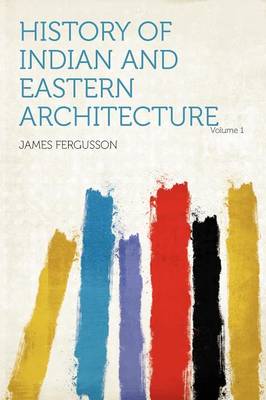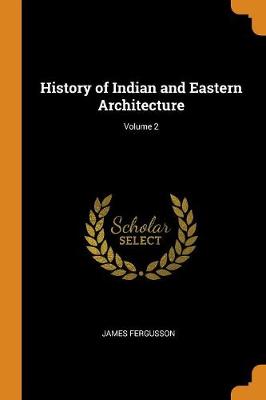Cambridge Library Collection - Art and Architecture
1 primary work • 3 total works
Volume 1
Born in Scotland, James Fergusson (1808-86) spent ten years as an indigo planter in India before embarking upon a second career as an architectural historian. Although he had no formal training, he became one of the most respected researchers in the field and an expert on India's cave temples. His History of Indian and Eastern Architecture was first published in 1876 and became a standard work. It was revised in this two-volume edition of 1910 by James Burgess (1832-1916), former Director of the Archaeological Survey of India, and Richard Spiers (1838-1916), a noted architect and historian of architecture. Volume 1 covers Buddhist and Himalayan architecture, the Dravidian style of southern India, and the later Chalukyan style from southern and central India in the early medieval period. Illustrated with 280 maps, plans and drawings, this work of impressive scope remains relevant to students of Indian architecture and history.
An Historical Inquiry Into the True Principles of Beauty in Art
by James Fergusson
Published 8 January 2010
Born in Scotland, James Fergusson (1808-86) spent ten years as an indigo planter in India before embarking upon a second career as an architectural historian. Despite his lack of formal training, he became an expert in the field of Indian architecture, publishing Cave Temples of India and a History of Indian and Eastern Architecture, as well as The Holy Sepulchre and the Temple at Jerusalem, all reissued in the Cambridge Library Collection. In this illustrated work of 1849, he considers beauty in art, expressed chiefly by the architectural styles of different civilisations, beginning with ancient Egypt, and finishing with ancient Rome. (This book is named 'Part the First', but no subsequent volumes were written.) The first section is theoretical, tracing the intellectual development of man and his aesthetic sense, while the second considers the surviving evidence of the ideas of beauty held in the ancient world.
Born in Scotland, James Fergusson (1808-86) spent ten years as an indigo planter in India before embarking upon a second career as an architectural historian. Although he had no formal training, he became one of the most respected researchers in the field and an expert on India's cave temples. His History of Indian and Eastern Architecture was first published in 1876 and became a standard work. It was revised in this two-volume edition of 1910 by James Burgess (1832-1916), former Director of the Archaeological Survey of India, and Richard Spiers (1838-1916), a noted architect and historian of architecture. Volume 2 covers Jain and Indo-Aryan architecture, Islamic architecture in India, and the buildings of Burma, Cambodia, Thailand and Java. The final chapter looks at Chinese and Japanese temples. Illustrated with nearly 300 maps, plans and drawings, this work of impressive scope remains relevant to students of Indian and Asian architecture and history.


